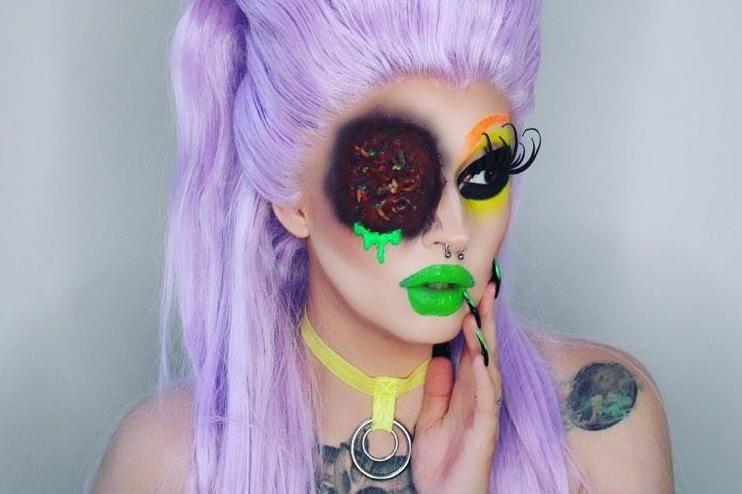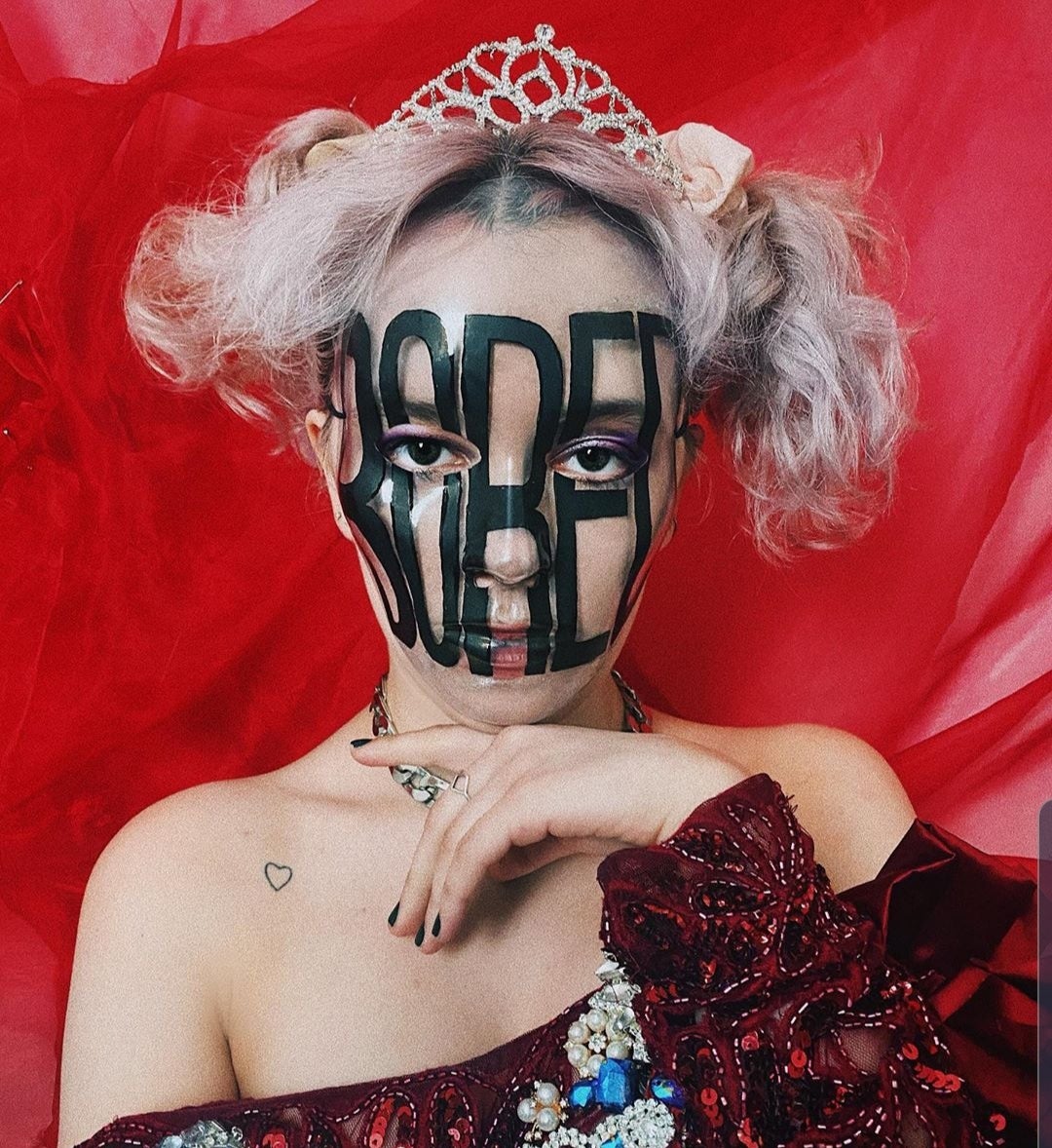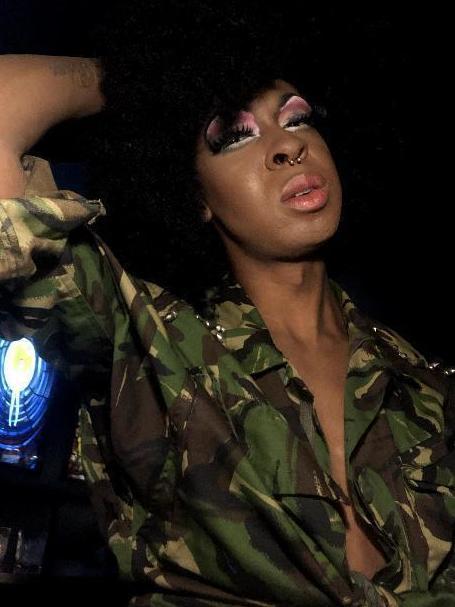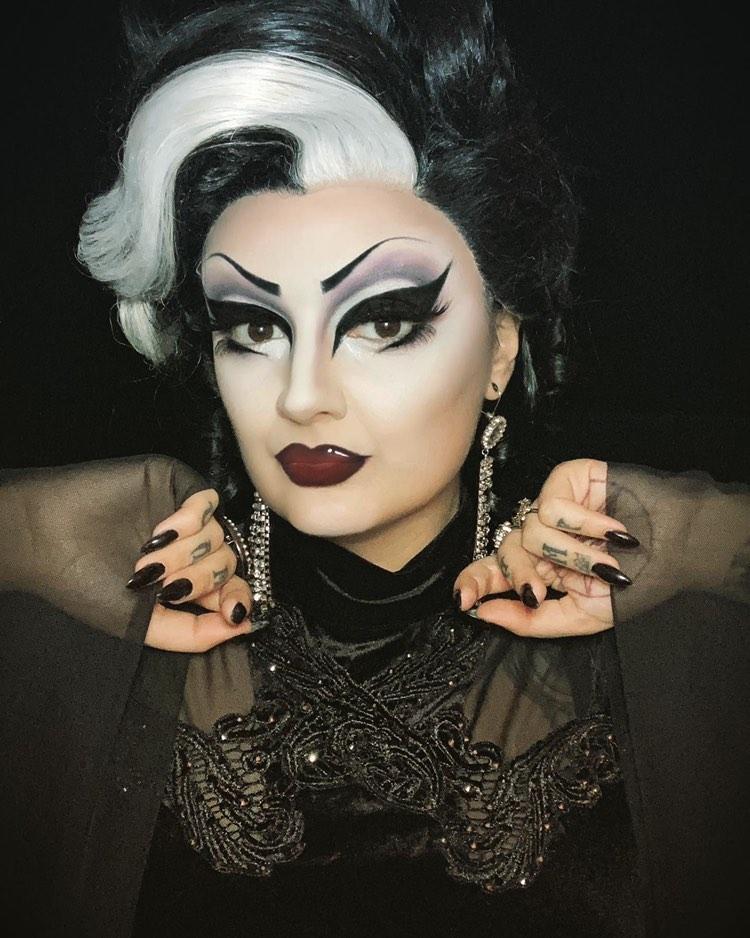Instagram performances and virtual bingo nights: Meet the artists defining drag’s new normal
Amid nightclub closures and economic difficulties, the drag scene has faced enormous pressure during lockdown. Katie Jenkins speaks to femme, trans and non-binary performers


Stella Marbles is in her underwear; pink chained bra, fishnet tights, and a translucent mask across the top half of her face. It’s an optimistic outfit for May, but this costume and the accompanying routine to The Veronicas’ “Untouched” is familiar territory for the femme drag artist who calls herself London’s Masked Club Queen.
Only the situation is anything but familiar. We are not at Cookie Jar or Cavity or Candyface: all drag nights Stella produces across London. Rather she is on the rooftop of her building in East London and I am almost 100 miles away, watching the performance on a video posted to her 5,000-plus Instagram followers.
“It’s been really rewarding to find new ways to channel my work,” Stella tells me via crackly video link two weeks later. “Lockdown has encouraged me to be creative and experiment with different mediums like video and photography.
“But there’s this worry of will we ever come back? Coronavirus has had such a profound impact on society’s relationship with gatherings and large spaces. Will there be a huge evolution of nightlife for drag artists [as we know them] to even be around after this?”
Stella’s concerns are by no means unique. While most industries have been impacted by the pandemic, drag’s transformation has been one of the most radical. It’s an art form rooted in nightclubs, live audiences and onstage shows, yet thanks to current lockdown restrictions, performers have been forced to rely on largely unpaid online performances and PayPal tips from fans. Figures from City Hall recorded 51 LGBTQ+ venues in London last July – down from 124 in 2006. Yet, as lockdown forces clubs’ doors to shut, and many – even stalwarts of the scene such as the Royal Vauxhall Tavern – to rely on crowdfunding to survive, the future for many drag artists is increasingly uncertain.
“It is depressing and scary,” says Eileen Bothways, a trans masc non-binary drag performer. “I went into drag four years ago but last year was my biggest year yet. I took 26 flights; I performed across three continents to 100,000 people. I’ve finally had the opportunity to live a life that is true to me.
“Now that’s gone. It may not be gone forever, but it’s a time of re-evaluation and assessing how best to continue.”

Indeed, for many femme, trans, and non-binary drag artists like Stella and Eileen, the sense of precarity is twofold. Thanks to the transatlantic success of shows such as RuPaul’s Drag Race, drag’s mainstream visibility has skyrocketed over recent years. Yet, all too often, the focus is on cis male queens, compounded by RuPaul’s comments in 2018 that “drag loses its sense of danger and its sense of irony once it’s not men doing it”. In the face of pre-existing marginalisation, many performers fear that post-lockdown pressures will further risk their visibility.
“Unfortunately, bigger venues will probably be up and running sooner than the smaller ones. I think that’s going to affect less mainstream performers like drag kings because we don’t often get booked for those really big events,” says Oedipussi Rex, a drag king based in Hertfordshire.

“However, the nice thing about doing virtual shows is that you can cater for everyone. For viewers you can add subtitles and trigger warnings, and in terms of producers, now there’s no excuse to book an all-white cis male line-up. Previously the excuse would have been, ‘Oh, I only know those performers. I can’t get anyone else to my show’. Well, that excuse is invalid now. Digitally, you have the world at your disposal.”
Especially in a time like this, seeing a drag artist of colour be unapologetic about human rights and Black Lives Matter resonates with people from all backgrounds
Shakona Fire, a non-binary political drag artist agrees: “Now everything’s virtual, everything can be seen. So, I think people are being more inclusive and I hope that that energy continues.”
As a performer who already supplemented her drag with a full-time retail job, Shakona says the emotional transition to lockdown has been “rough”. Yet, the move to digital drag has offered new engagement with her work, which she says has really “lifted” her. “Especially in a time like this, seeing a drag artist of colour be unapologetic about human rights and Black Lives Matter resonates with people from all backgrounds,” she says. “Even when I’ve been in bed like, ‘urgh I don’t know what to do’, seeing positive responses to my work online has really helped me get up and decide where I’m going next.”

Despite the difficulties then, for producers as well as performers, lockdown seems to have offered a unique opportunity to showcase and experiment with their work. You can join digital HIIT and aerobics classes courtesy of drag king Tito Bone; you can compete in mask-making contests thanks to Stella’s online event Cookie Jar; soon you might even be able to attend games nights if Oedipussi virtualises his event Phantasmaglorious as he hopes to do.
Mynxie is one drag queen who, it seems, has embraced the world of online drag. Over the last two months, she’s hosted Facebook bingo nights, performed at Instagram Live festivals, and continued to produce her event Horror Haus on Twitch. Yet, for all her apparent success, she says it has been difficult to stay afloat as the novelty of virtual events wane. “At the start of lockdown when we did bingo, we had 100 people tuning in every week. But it’s really dying down,” she says. “That’s partially because Facebook and Instagram do limit your reach when you’re not paying for promotion, but also because viewers are tired. Where we’ve been in lockdown so long now, people are apathetic.”
As soon as venues can reopen again – honey, I will be out in my heels with a speaker on my head, cartwheeling to the closest gig I can find
As a full-time drag performer for the last year, Mynxie’s income has taken a significant hit too. Where she could earn up to £2,000 a month just before lockdown, now she relies on universal credit to cover her rent, bills and most groceries. The spate of Covid hardship funds by LGBTQ+ collectives including London Bi Pandas suggests that Mynxie’s situation is a common one, both amongst drag artists and marginalised members of the community more widely.
So, as lockdown remains in place for the foreseeable future, amid economic pressures and digital saturation, how do performers feel about the future of drag?
“I’m definitely nervous, but I’m going to keep the silver lining in mind,” says Shakona. “As soon as venues can reopen again – honey, I will be out in my heels with a speaker on my head, cartwheeling to the closest gig I can find. But, in a situation like this, we’ve all just got to be patient, stay informed and keep hoping that things get better.”
Stella too feels positive: “Queer art has survived through so many hardships and has always been essential for our community regardless of how we create it or how we find it. Who knows – maybe this will encourage us to innovate and evolve in ways that are unexpected but better in the long run?”
Join our commenting forum
Join thought-provoking conversations, follow other Independent readers and see their replies
Comments